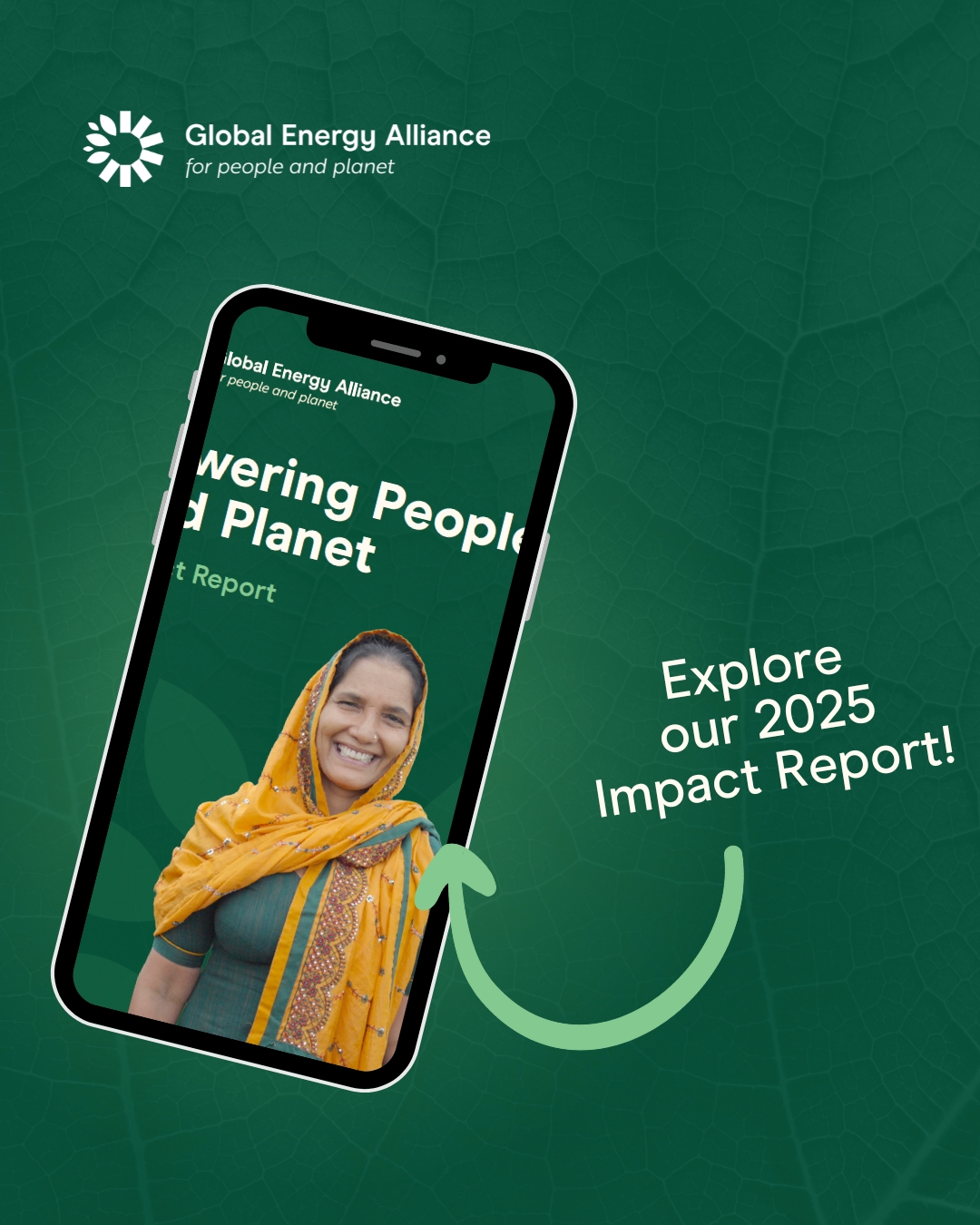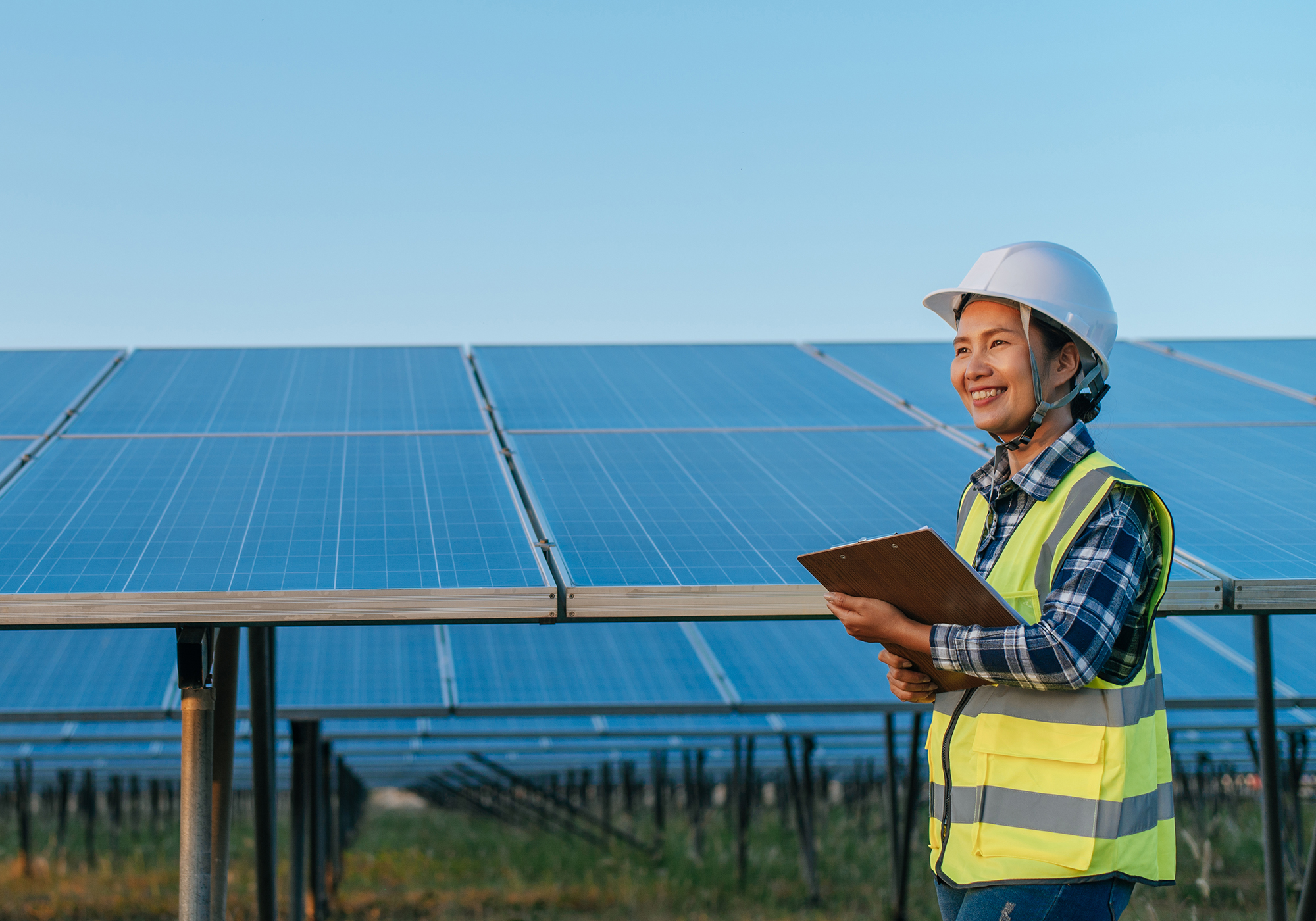Renewable Energy Investments Can, and Should, Empower Women Across the Developing World

We must address the intersection between gender equity and energy access.
One evening several years ago, I was walking down the main street of a rural community in Uttar Pradesh, India. Everywhere I looked, there was a buzz of activity: neighbors greeting one another, vendors promoting their goods, customers browsing through shops and stalls. Smart Power India (SPI), an initiative of The Rockefeller Foundation, had just supported a private developer in installing a solar-powered mini grid that electrified the village and its market.
Despite the excited hum in the air around me, I couldn’t help but notice who was missing: women. Stepping just a few meters away, into the village’s residential area, I found women cooking over fires and helping children with schoolwork in homes that weren’t connected to the new mini grid. While solar power was transforming the businesses of men nearby, it didn’t seem to be economically impacting women much, or at all. The data we collected about our broader work across rural India confirmed my observation: while women marginally benefit from electricity access and report an improved quality of life, it has not translated to economic gains for them.
Our project had encountered a common development challenge. Often, organizations build green infrastructure in underserved communities without considering women and girls. They are the people who lose out on economic opportunities when electricity is not available, affordable, and reliable — and who, without explicit support, continue to lose out even when it is.
Bringing electricity to a community without addressing or changing its social distribution of power can backfire — the people who need it most are left behind, and existing inequities are exacerbated. When it comes to development, we have to start treating gender equity and energy access as the intersectional issues they are.
We also have to ensure women aren’t left out of employment opportunities in energy, one of the least gender diverse industries. Renewable energy has shown promising career pathways for women, with higher female representation than other energy sectors. And with increased investment in clean energy transitions in emerging economies, we have an opportunity to boost the number of female renewable energy workers and increase the number of female consumers of energy.
The Global Energy Alliance for People and Planet, launched by The Rockefeller Foundation, IKEA Foundation, Bezos Earth Fund, and development finance, country, and delivery partners at COP26 last November, has set ambitious goals along those lines. The Alliance aims to reach one billion people with reliable, renewable power, avoid and avert four billion tons of carbon emissions, and create, enable, or support more than 150 million green jobs over the next decade. And it aims to ensure that half its projects’ productive energy users are women and that its projects increase women’s participation in the renewable energy sector to 50%.
Meeting these bold targets will take aligned efforts and intentional investments. Despite incredible advances in renewable energy, these technologies aren’t spreading at the speed and scale needed to make change, especially for women in the developing world. That’s why the Alliance is working to provide concessional finance to renewable energy companies, decreasing the costs of technology and increasing energy usage by pairing energy investments with investments in rural enterprises and agriculture — ensuring energy powers economic development.
However, without an explicit commitment to supporting gender equity, women will not benefit from these investments. To make this happen, agriculture, livelihood, and microfinance programs must help women utilize and expand their economic opportunities with reliable electricity. And investments in renewable energy companies must ensure women are not only part of the workforce but also part of its leadership. The only way women will benefit from expanded energy access and the new economic opportunities it creates is with direct investment across the energy value chain.
To that end, and to support its goal of increasing women’s participation in the renewable energy sector, the Alliance recently announced a new collaboration with Shortlist and Value for Women to create 750 green jobs for women across six countries in Sub-Saharan Africa: Nigeria, Uganda, Sierra Leone, Ethiopia, Kenya, and Malawi. This project is placing many women in high-volume roles, while also prioritizing women in high-value, visible, and nontraditional roles. Beyond the women placed directly into green jobs, the program will also lay the foundation for the continued hiring of women by preparing a vast talent pool, developing a hiring database for employers, and providing technical assistance to energy companies on equitable employment practices.
And to advance its goal of increasing the number of female productive users of energy, the Alliance has partnered with CARE Sierra Leone to work across 20 mini grid electrified communities to help more than 7,000 women start and grow energy-enabled businesses. By providing financing for energy-enabled appliances, soft and hard business skill training, and mentoring, the project will help women launch new businesses or expand existing businesses to increase their profitability. CARE Sierra Leone will identify how to influence other livelihood funders to coordinate energy and gender funding and develop a replicable blueprint for supporting profitable, sustainable, renewable energy-enabled businesses for women in mini grid sites across other emerging markets.
The recently-launched Alliance is beginning our work with these pilot projects so that we can use what we learn from them to inform our future interventions — and try to ensure everything we do actively supports women. Because empowering women empowers communities. With the right investments and the right intentions, the Alliance and our partners will work to make the renewable energy sector more inclusive, and in doing so, build a more equitable, sustainable future for us all.



